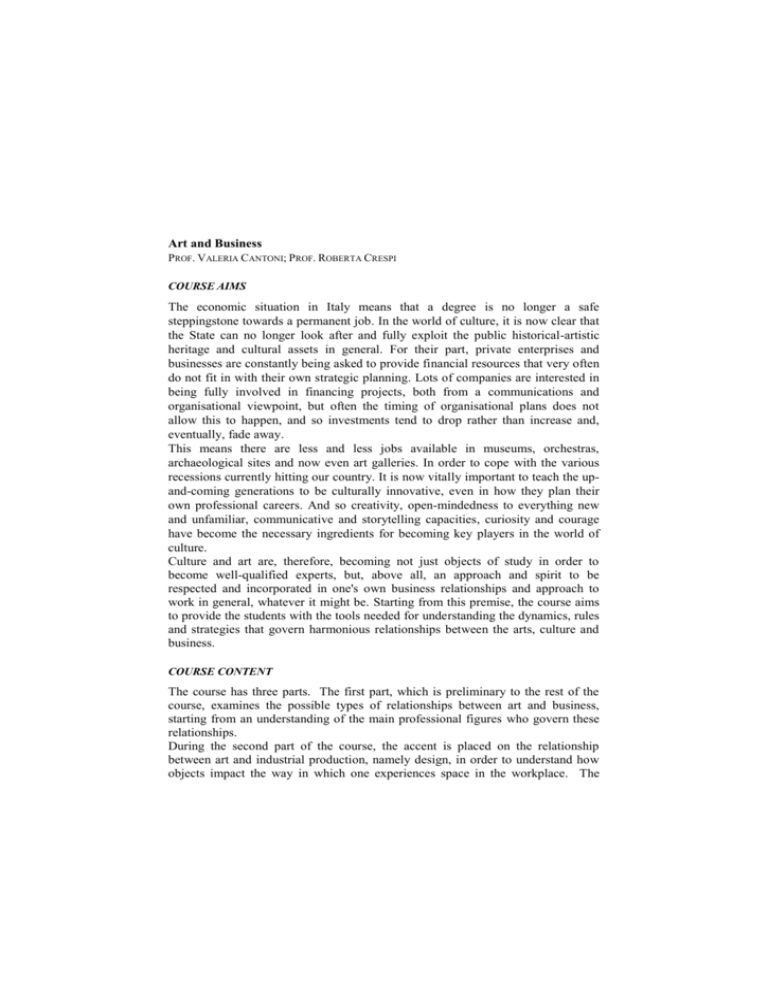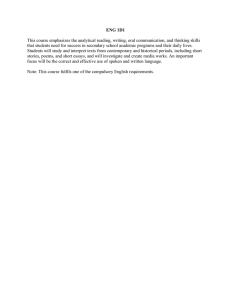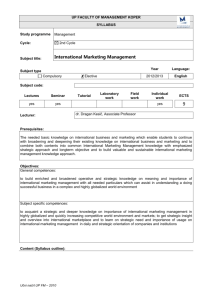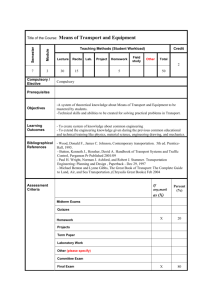Art and Business
advertisement

Art and Business PROF. VALERIA CANTONI; PROF. ROBERTA CRESPI COURSE AIMS The economic situation in Italy means that a degree is no longer a safe steppingstone towards a permanent job. In the world of culture, it is now clear that the State can no longer look after and fully exploit the public historical-artistic heritage and cultural assets in general. For their part, private enterprises and businesses are constantly being asked to provide financial resources that very often do not fit in with their own strategic planning. Lots of companies are interested in being fully involved in financing projects, both from a communications and organisational viewpoint, but often the timing of organisational plans does not allow this to happen, and so investments tend to drop rather than increase and, eventually, fade away. This means there are less and less jobs available in museums, orchestras, archaeological sites and now even art galleries. In order to cope with the various recessions currently hitting our country. It is now vitally important to teach the upand-coming generations to be culturally innovative, even in how they plan their own professional careers. And so creativity, open-mindedness to everything new and unfamiliar, communicative and storytelling capacities, curiosity and courage have become the necessary ingredients for becoming key players in the world of culture. Culture and art are, therefore, becoming not just objects of study in order to become well-qualified experts, but, above all, an approach and spirit to be respected and incorporated in one's own business relationships and approach to work in general, whatever it might be. Starting from this premise, the course aims to provide the students with the tools needed for understanding the dynamics, rules and strategies that govern harmonious relationships between the arts, culture and business. COURSE CONTENT The course has three parts. The first part, which is preliminary to the rest of the course, examines the possible types of relationships between art and business, starting from an understanding of the main professional figures who govern these relationships. During the second part of the course, the accent is placed on the relationship between art and industrial production, namely design, in order to understand how objects impact the way in which one experiences space in the workplace. The relationship with objects conditions our existence and also our way of thinking and working. Knowing how to make the most of this relationship means entering and making use of a work space with greater awareness. The third part of the course tackles the issue of integrated (external and internal) communications. How is it possible to manage and make the most of relationships within organisations? How is it possible to describe the history of one's organisation to external stakeholders? The arts can be a very effective strategic lever. The course looks at different forms of communication, with a focus on storytelling. READING LIST The reading list will be provided at the start of the course. The materials used in class along with other instructional materials will be posted to the professor's web page at the end of each part of the course. TEACHING METHOD Classroom lectures, labs and workshops held by the lecturer. There will also trips in the city to visit places of relevance for the course. ASSESSMENT METHOD Exam program for attending students who sit the exam before December 2015: 1. Written exam with one question on one of the course reading list options. 2. The oral exam, to be taken at the end of the written part, will test the student’s knowledge of the assigned reading list and the contents of the lectures. The exam results will be communicated by e-mail within ten days of the written exam and registered at the next exam session. Students who need to register their results in time for their thesis or because they are going abroad will be informed of their results on the same day as the exam. The exam for attending students who plan to take the exam in or after January 2016 is exclusively written and consists of four questions: – two questions on the course content; – two questions on the texts assigned during the course (one on the compulsory text, the other on the student’s chosen text). Non-attending students: Must prepare four texts (three compulsory and one from the options list). The written exam consists of four questions: – three questions on the compulsory texts; – one question on the student’s chosen text. NOTES Further information can be found on the lecturer's webpage at http://docenti.unicatt.it/web/searchByName.do?language=ENG, or on the Faculty notice board.











